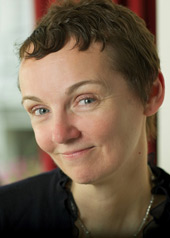Thoughts on recent reimbursement and regulatory news for diabetes devices
By Kelly Close
 Spring is supposed to be a time of renewal – of warmer days and brighter suns – but this year, in San Francisco and throughout the country, amid frigid temperatures and brisk winds and lingering snow, spring has been elusive. But sometimes renewal comes from unexpected places, not from the rhythms of the earth but from the conscience of our citizens.
Spring is supposed to be a time of renewal – of warmer days and brighter suns – but this year, in San Francisco and throughout the country, amid frigid temperatures and brisk winds and lingering snow, spring has been elusive. But sometimes renewal comes from unexpected places, not from the rhythms of the earth but from the conscience of our citizens.
If that sounds over the top, well, shoot me, because that’s how I felt while following the dramatic news out of Washington State. There, the Healthcare Technology Assessment board voted not only to preserve unlimited reimbursement of blood glucose meters, but also to start reimbursing continuous glucose monitors in children who have had severe hypoglycemia. As we write in this month’s New Now Next, we applaud the panel for listening to the evidence-based appeals of Dr. Lori Laffel, diaTribe advisory board member Dr. Irl Hirsch, and the other healthcare providers and patients who spoke so eloquently at the meeting. We hope that other states and the federal government follow suit in their own coverage, though we hope that they (unlike Washington State) actually include endocrinologists and educators in their decision-making bodies.
Fittingly, the Washington State reimbursement developments coincide with some positive news about diabetes technologies themselves. The European Medicines Agency recently cleared Dexcom’s fourth-generation sensor, Insulet and GSK are partnering to bring the OmniPod to Canada, and – closer to home – the FDA gave the green light to LifeScan’s OneTouch Verio glucose meter. It’s great to see that patients in the US and abroad will soon have access to more, and better devices, even while facing difficult economic and regulatory hurdles.
The US federal government also gave us reasons to be hopeful. It recently expanded its workplace anti-discrimination laws to include diabetes, which follows last year's Affordable Care Act that extended a new coverage option to people with pre-existing conditions like diabetes. These programs have yet to be proven effective, and even at their best they will hardly fill the many gaps in our nation's diabetes care. Nonetheless, we believe that they signal good things to come as healthcare reform continues.
In this time of transition, we think it's especially important that patients and advocacy organizations continue to emphasize the value of diabetes treatment and prevention. On that note, I wanted to say a word on the exhibit, Diabetes: A Deeper Look, which Jim Hirsch writes about this month. Although the exhibit was originally scheduled to travel for three years, its itinerary is now in question as a major corporate funder has withdrawn support. While we weren't able to uncover the reasons why, we personally would love to see the exhibit organizers take strides to address the shortcomings that Jim mentions in his column. We're ALL for education on diabetes - just done the right way; I feel very uncomfortable as a patient with diabetes when our condition isn't aptly characterized. However, if the organizers could make some critical changes, I believe they may be able to generate more support and spread their important message more effectively. Here's a call out to improve this exhibit and get it back on the road.
Sadly, I also have to mention some disappointing news, especially for those of us with family members susceptible to type 1. Two promising therapies for new-onset type 1 diabetes, teplizumab and otelixizumab, have both failed to show efficacy in late-stage clinical trials, and the companies have suspended experimental dosing. It's a reminder of how hard the path to a cure has been and will be, even for top companies and research institutes with millions of dollars and decades of experience. Still, efforts to target a cure continue in too many ways to list here - a vibrant topic that we'll take on soon in a special, extra-long edition of diaTribe. In the meantime, we'll remember that when the days are getting longer, warmer, and more beautiful, hope springs eternal.
Best,

Kelly L. Close







